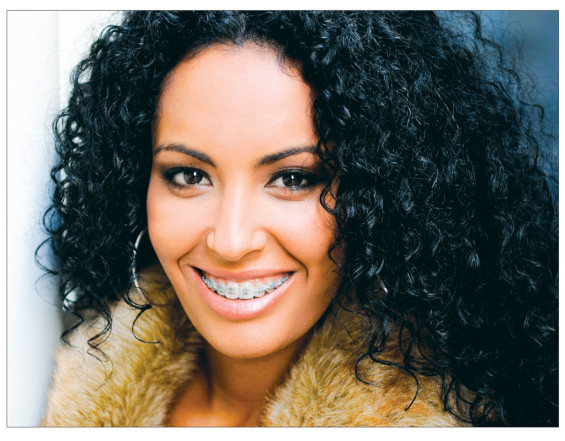
Aside from being prominent celebrities, what do Faith Hill, Katherine Heigl, Gwen Stefani, Tom Cruise, Kate Middleton and Katy Perry have in common? They all opted as adults to treat their orthodontic problems with corrective braces, and according to the American Association of Orthodontists, these celebrities are part of a growing trend.
Today, one in every five orthodontic patients is over the age of 18, and many are in their 40s, 50s and beyond. Academy Award-winner Faye Dunaway was 61 years old when she elected to get braces. A report issued by the Harvard Medical School suggests, “Although childhood is the ideal time to make changes in the positioning of the teeth, more adults are opting for orthodontic treatment and coming away with excellent results.”
In addition to boosting your confidence and self-esteem, orthodontics can correct a variety of dental problems, including misaligned teeth, overcrowded teeth, bite abnormalities, and jaw problems. Without proper treatment for these conditions, you could be at higher risk for cavities, gum disease, ear pain, headaches, and chewing and speech problems, and some of these problems worsen as you age. For this reason, braces can be an important part of maintaining your oral health, no matter how old you are.
In the past, many adults would not even consider orthodontic treatment because they could not imagine walking around with a mouth full of metal. Fortunately, however, several options for straightening teeth exist today that are more aesthetic and discreet than traditional stainless steel braces. In some rare cases, only a removable retainer is necessary to make slight changes. In other rare cases, surgery may be necessary. Most often, however, the treatment will consist of braces or aligners, followed by ongoing use of a retainer.
TREATMENT OPTIONS
Orthodontic treatments work by applying continuous pressure to your teeth over time to move them slowly into alignment. As the teeth shift, they loosen from the gum line and move into place, and the bone around the teeth also changes shape to support the new positioning. The process is gradual, generally taking between one and three years, because if the teeth move too quickly they could become unstable. There are several different orthodontic appliances available from which to choose.
Conventional Metal Braces—For metal braces, your orthodontist will attach metal brackets to your teeth connected by wires that apply pressure to your teeth to cause the movement needed to move them into proper position. While conventional metal braces are efficient and relatively inexpensive, adults tend to prefer treatments that are less noticeable.
Clear Braces—Ceramic braces are similar to traditional braces, but their brackets are made of clear composite materials or tooth-colored porcelain so only the connecting wires are plainly visible. It is possible to coat the wires with a tooth-colored coating, but coated wires are typically less efficient than uncoated wires so they are not often used. The composite materials of clear braces are weaker and more brittle than metal braces, but this is generally not a significant problem for adults who tend to be more conscientious with their orthodontic investment than younger people. Because clear braces are discreet and more affordable than some other options, they are a popular choice among adults.
Lingual Braces—Lingual braces are custom-made and attached to the back of the teeth, facing the tongue, so they are not visible when you speak and smile. Your orthodontist constructs these braces by making an impression of your mouth and scanning it into a computer program that designs a plan for braces specifically to fit your mouth. The downside of this option is that, since they are on the backside of the teeth, they can interfere with the movement of the tongue, which can be irritating and uncomfortable, and cause difficulty with speech. Because these braces are custom-made and more challenging to adjust than other methods, this is generally the most expensive option.
Clear Acrylic Aligners—Acrylic aligners are clear, removable appliances custom-made from a mold of your mouth that apply pressure to your teeth to move them into alignment. You wear each set for a few weeks, and once your teeth have adjusted, your orthodontist will fit you for a new set. The advantages of aligners are they are nearly invisible, easier to clean than braces, and are removable during eating. The disadvantages are that they can be costly, often take longer to work than traditional braces, and some people still need a short period of regular braces following the aligner treatment. While this type of treatment can be effective for aligning the teeth, it is not effective for correcting bite problems. Additionally, patients of this type of treatment must be significantly motivated and self-disciplined because they face the constant temptation to remove the appliance, which can greatly slow down the treatment process.
Retainers—After the orthodontist removes the braces or completes aligner treatment, the final step of the process is the retainer, an appliance designed to hold the teeth in their new position while the bones around them stabilize. It is critical to wear the retainer as directed to prevent your teeth from regressing to their original positioning.
FACTORS TO CONSIDER
If you may be interested in orthodontic treatment, there are factors specific to adults to consider going in to the process.
• The bones of adults have stopped growing, so the realignment process may take longer than it does for younger patients.
• Some structural oral changes in adults are not possible without surgery.
• Adults tend to enter the process with pre-existing dental work and conditions so orthodontics can be more complicated than with younger patients. If you wish to receive orthodontic treatment as an adult, you will likely need to start by seeing your general dentist and a periodontist to ensure that factors such as existing dental work, gum disease or other conditions will not adversely affect your treatment.
If you are considering orthodontic care, your first step will be to schedule an appointment with an orthodontist who will recommend a treatment plan and discuss your options with you to determine which might be best for meeting your needs, time frame and budget. Keep in mind that some medical and dental insurance plans cover at least a portion of orthodontic work, so check with your provider regarding your benefits before you initiate the process.
Adults, Brace Yourself!
By Judy Latta
http://fortbendlifestylesandhomes.com/adults-brace-yourself/







 Website Powered by Sesame 24-7™
Website Powered by Sesame 24-7™